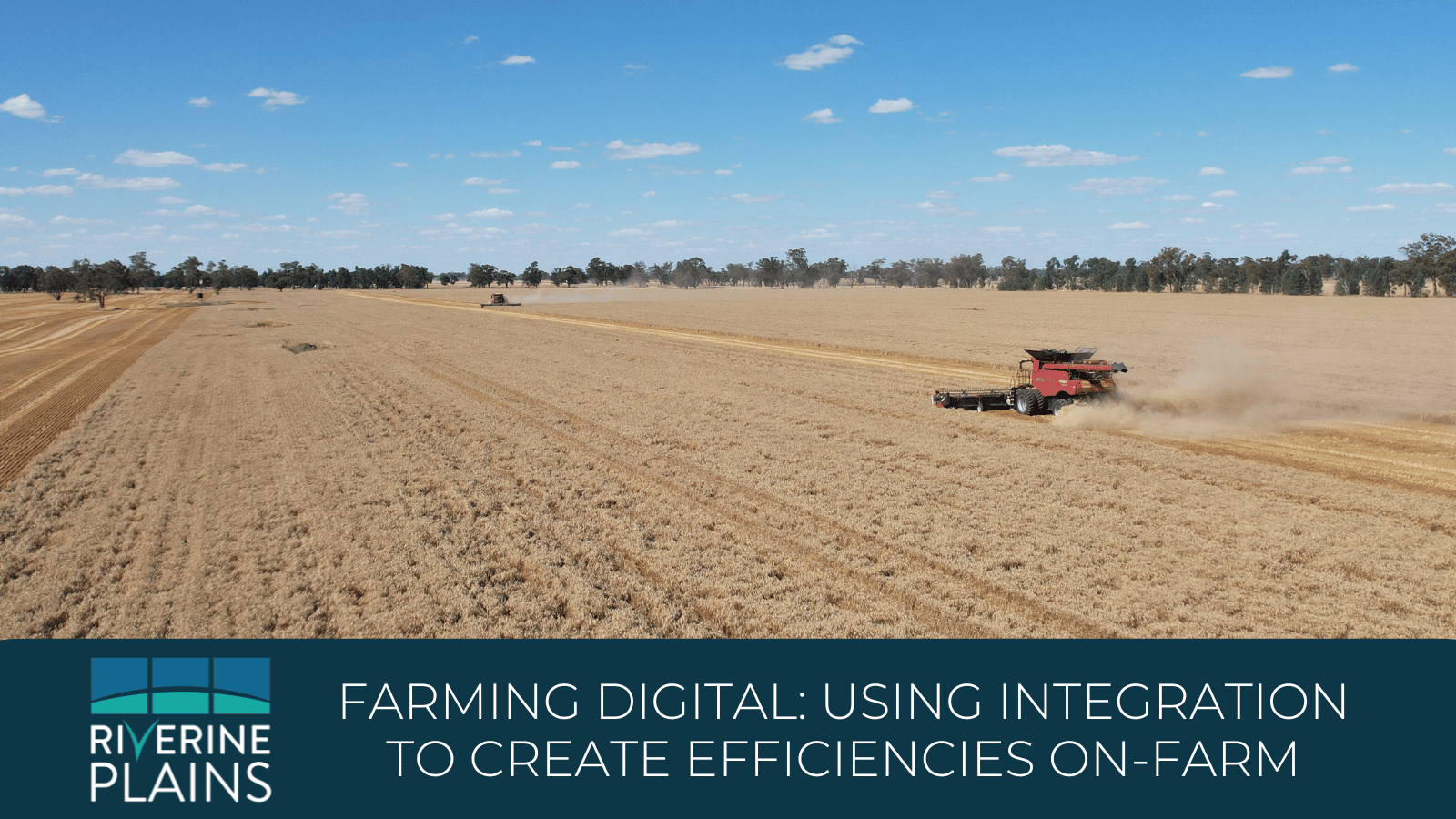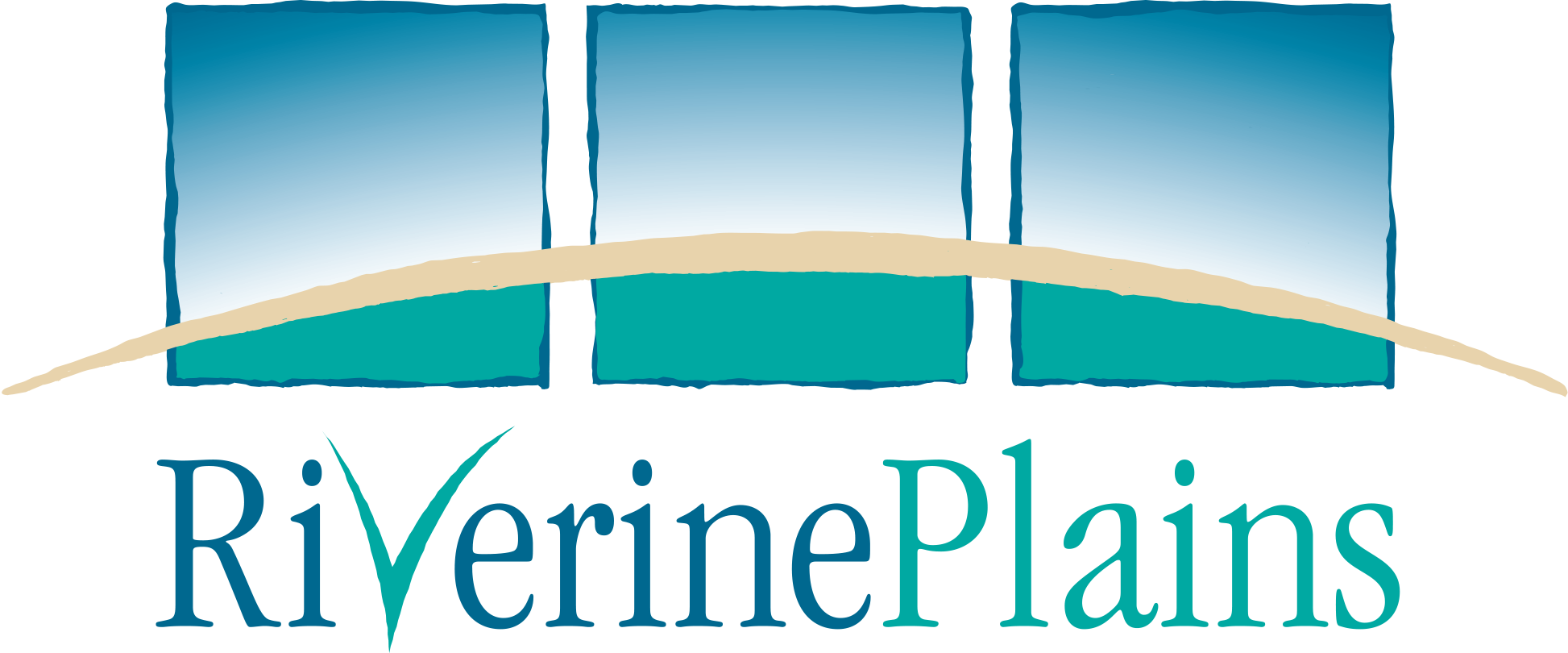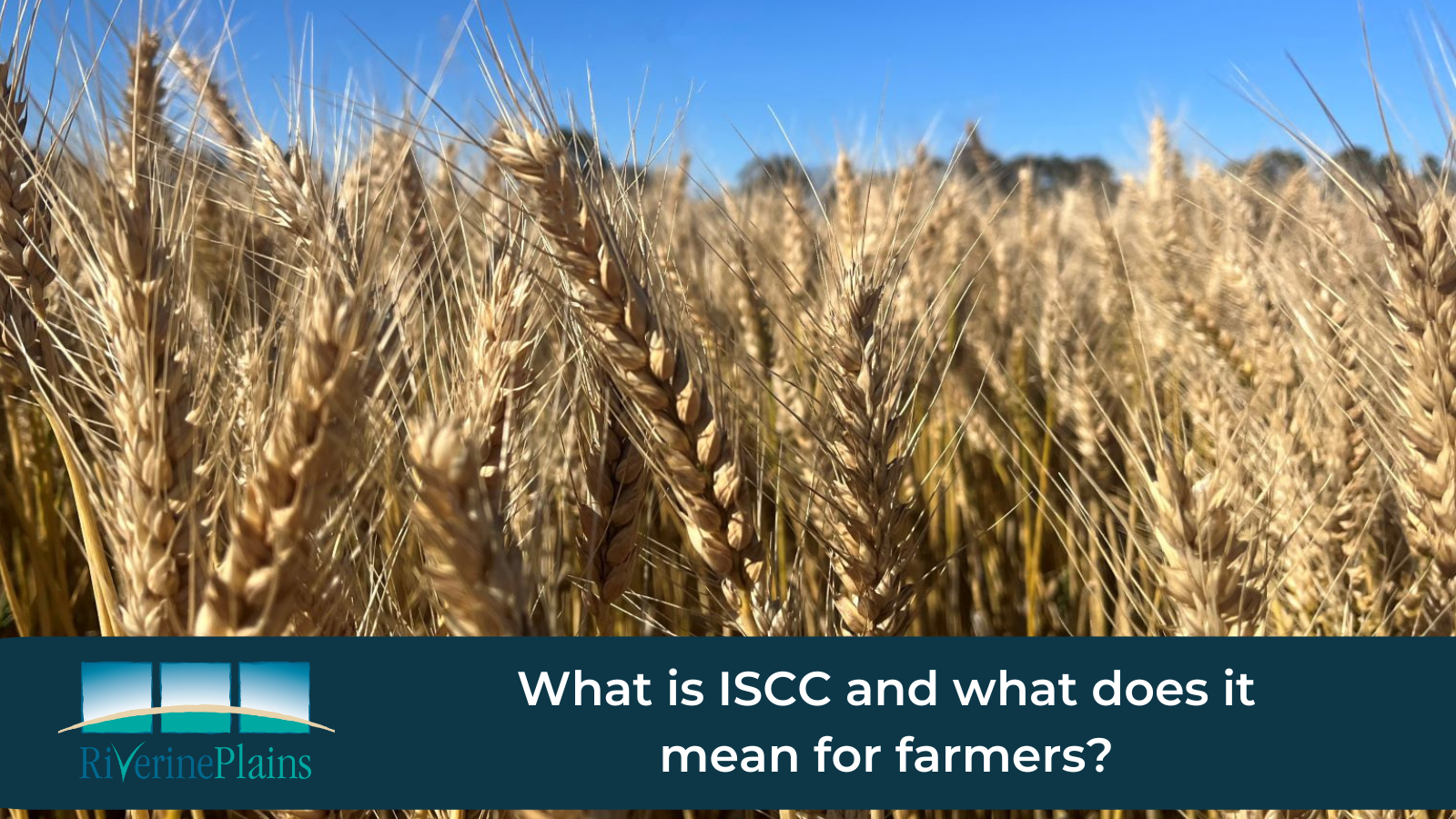Farming Digital: using integration to create efficiencies on-farm

Key messages
- using apps with the ability to integrate with other farm hardware and software can save time inputting data and provide decision making benefits
- yield maps can often be hard for farmers to access in time to make management decisions; apps such as Bayer’s FieldView can help solve this by providing live, remotely accessed, and shareable data via a cloud-based system
- local farmers that tested the FieldView app liked its ability to map farming operations, and that results were available in real time; the high level of data collection can also be integrated with other management software systems for further business insights and planning for upcoming seasons
Agritech is an integral part of farming, and there is huge potential for agricultural technologies to create greater efficiencies across the farming business.
Riverine Plains has had a long history of assisting farmers to understand and adopt new technologies that can help solve problems or create efficiencies in their farming businesses. We've recently been working with Bayer and local farmers to trial the functionality of the FieldView technology, as part of a broader project supported by AgriFutures Australia.
So what’s the potential for this technology, and what did local farmers think of it?
What problem does this app solve for farmers?
There are so many agriculture-related apps available today, each with a very specific purpose. Essentially, most aim to help make a process easier, saving time and assisting with decision making.
At our Riverine Plains AgTech Workshop in September 2023, we assessed some common apps used on-farm, highlighting what they did well and where functionality or user experience could be improved. These discussions quickly made it apparent that what we really need is interoperability – which is when farm software speaks to each other – to reduce farm administration and increase data accuracy.
One of the workshop comments was that we need a real-life version of the video game ‘Farming Simulator’ - as ideally farmers want to be able to purchase a drum of chemical from their local farm retailer and have that purchase receipt automatically uploaded to their accounting software, with the stock added to their online ‘shed’ and the SDS then sent to their chemical manifest. While this sort of integration seems futuristic, there is increased investment going into data sharing and it is likely that integrations and the flow of data between various services will be ready sooner than we think.
Solving the integration problem with an app
Managing operations and inputs throughout the season can be challenging with a mixed fleet, and collating and interpreting the data is often challenging. In response, Bayer have developed the FieldView app which compiles data from various equipment types into one place and connects with multiple management software systems.
Riverine Plains recently delivered a project which supported four local farmers to trial Bayer’s FieldView app over the 2023 harvest and into the 2024 cropping season. This opportunity was provided by AgriFutures Australia through the Producer Technology Uptake program.
One of the features of the FieldView Drive is that it allows farmers to see field maps generated in real time across every operation (sowing, spraying, spreading, harvesting) for the season. This data is stored in a cloud-based system and can be easily shared to consultants, with reports being generated at the touch of a button.
What do farmers say about the app’s potential?
Our farmer focus group clearly identified a need for a user-friendly operational software platform that showed live data and was easy to view and analyse. Yield map accessibility was a common issue for local farmers, with the process often so tedious that farmers were not factoring in yield maps during decision making. There was hope expressed that FieldView would be able to address some of these concerns.
The four farmers that trialed FieldView were hoping to gain further insight into how their paddocks were performing, extract data from yield maps to create prescription maps, and stack maps from operations throughout the season. Note: FieldView can provide these functions in a simple format which can be viewed remotely, with no wait time between operation and map creation, resulting in streamlined data capture and decision making.
After trialing the app, all four farmers were interested in continued use of FieldView over their sowing and in-season operations, to see how the data collected can improve efficiencies and decision making.
The challenges with adopting FieldView — which is common to all technologies — included calibration, familiarisation with the user interface and ensuring all the data was being inputted to get the best out of the technology. FieldView also uncovered some differences in the GPS accuracies of various brands, and highlighted the importance of being prepared for the 3G network switch off – see our blog: What does the 4G upgrade mean for my farm? (riverineplains.org.au). The support team at FieldView were able to assist with these inaccuracies by adjusting the maps as required.
Some features that our test farmers found especially useful were:
- the remote view; seeing yield maps straight away and seeing where each header is up to in the paddock
- seeing data updated in real time (when an internet connection was available)
- the ease of pulling out data in a report format and being able to capture weather at the time of operation
- having data on each operation, which allows for more accuracy across the business
- ease of record keeping for all operations.
Is it the right fit for my farm business?
The ‘FieldView Drive’ is the actual piece of hardware needed for the FieldView software to collect operational data. The drive is compatible with a number of brands and machinery types, with a long list of harnesses and adapters available. The technology works best with ISOBUS compatible machines, however it connects with a diverse range of systems.
If this is something you are interested in trying out, we recommend contacting the FieldView team at Bayer directly to see if your machines are compatible. Bayer currently has an introductory offer available where farmers can trial FieldView on their farm for one season for free before signing up to the subscription.
If you are interested in hearing more about local farmer experiences with Fieldview, keep your eye out for our video case study on our website.
For more information about FieldView, the Drive and subscriptions, please contact the FieldView team at fieldview.australia@bayer.com or 1800 491 809.
Integrating your on-farm ‘tech stack’
Riverine Plains will be trialing more digital and hardware solutions for farm businesses this year.
If you have challenges with integrating any of your existing software or hardware, please let us know, as we are currently working with farm management software and hardware providers to help streamline your on-farm tech stack (there are dozens of technologies deployed on-farm to support farm business efficiency; the software and hardware that farmers select is called their ‘tech stack’).
There is also a lot of collaboration currently happening behind-the-scenes between hardware and software companies to try and make a farm’s tech stack work easily, effectively, and deliver stronger return-on-investment. This includes the time it take to set-up and maintain this ‘stack’ of technology.
For more information about this project, and what we are doing in the agritech space, please contact Riverine Plains Project Manager Rhiannan McPhee by emailing rhiannan@riverineplains.org.au or phone (03) 5744 1713.


